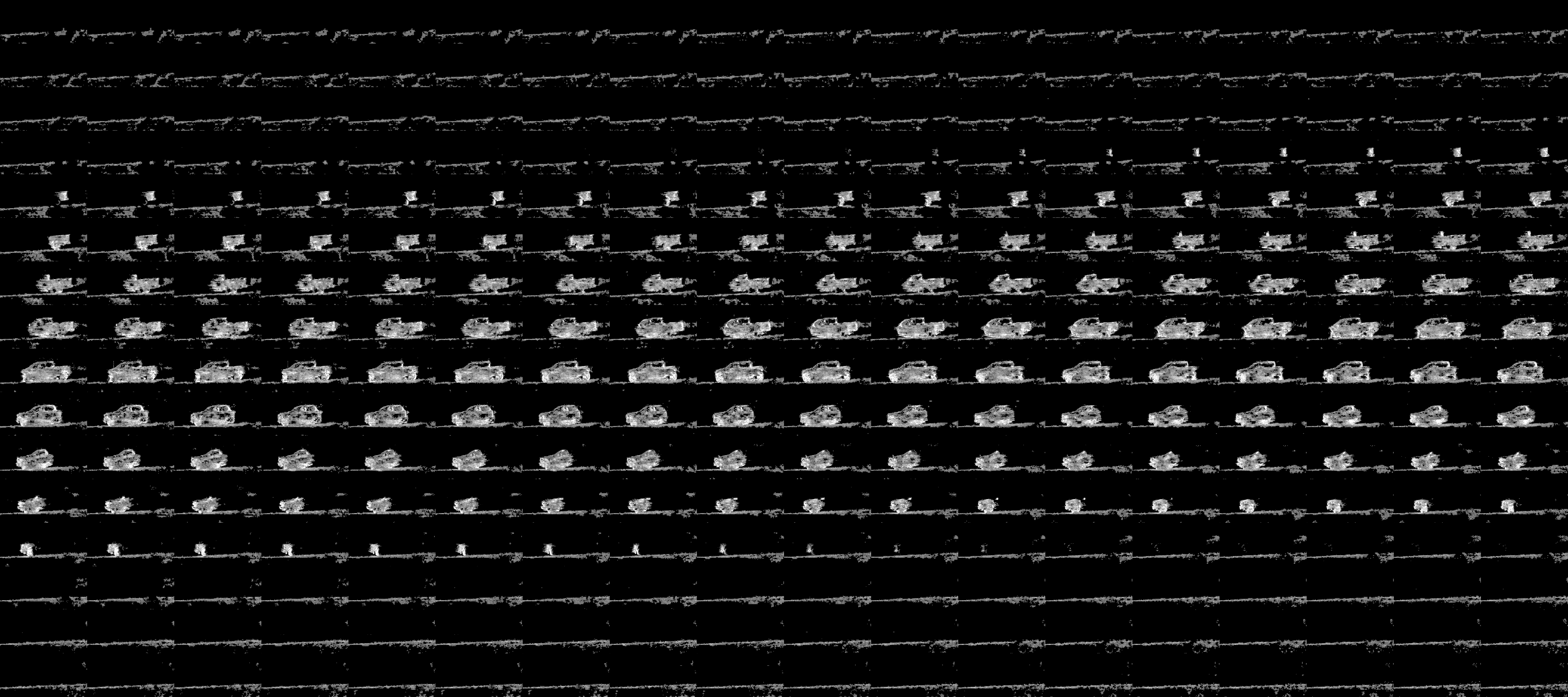NERF SHOWCASE
SELECT MODEL
A detailed 3D truck model rendered using Neural Radiance Fields technology.
GPU STATUS
VOLUMETRIC RENDERING
RENDERING PARAMETERS
Controls which parts of the volume are visible based on density
Controls the precision of the ray marching algorithm
Controls the overall transparency of the volume
DENSITY MAP

2D Representation
This density map shows a 2D representation of the volumetric data. Each pixel's brightness corresponds to the density value at that point in the volume. The brighter areas indicate higher density regions where the truck model is present.
python /opt/instant-ngp/scripts/colmap2nerf.py --video_in truck.mp4 --video_fps 2 --run_colmap --overwrite
Command used to generate the NeRF model from the source video
SOURCE VIDEO
Original Footage
This is the original video footage used to create the Neural Radiance Field (NeRF) model. The NeRF algorithm processes multiple views of the truck to reconstruct a 3D volumetric representation, allowing for novel view synthesis and interactive exploration of the 3D scene.
The video contains multiple angles and perspectives that provide the necessary information for the NeRF algorithm to understand the 3D structure and appearance of the object.
TECHNICAL DETAILS
This showcase demonstrates volumetric rendering of a Neural Radiance Field (NeRF) using WebGL shaders and Three.js.
Implementation
The truck model is represented as a stack of 288 RGBA texture slices, each with a resolution of 352×176 pixels. These slices are loaded into the GPU and rendered using a custom ray marching shader that samples the volume along view rays to create the 3D effect. The downloadable dataset contains all 288 slices used in this visualization.
Ray Marching
The rendering technique steps through the volume from front to back, accumulating color and opacity based on the density values stored in the alpha channel of each slice. This creates a realistic 3D appearance from 2D image slices. The density map image provides a 2D visualization of this volumetric data.
Performance
The renderer uses early ray termination to improve performance by stopping the ray march when sufficient opacity has accumulated. WebGPU acceleration is used when available to further enhance performance.